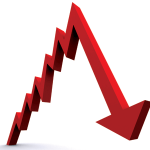 Every year, Bloomberg releases a list of the 100 best performing hedge funds. This year, as with many years, the majority of the best performers specialized in distressed assets.
Every year, Bloomberg releases a list of the 100 best performing hedge funds. This year, as with many years, the majority of the best performers specialized in distressed assets.
There are many ways to invest in distressed assets, including investing in distressed common stock on an exchange. A number of these names (Radio Shack–RSH, Research In Motion–BBRY, Nokia–NOK, and Sears–SHLD) are household names that have seen their business models threatened by competition, and are currently considered distressed equities.
But they may not be distressed forever. Such was the case with Ford (F), Bank of America (BAC), and KB Homes (KBH), which were hit hard in the 2008 crisis and have since bounced back partly or fully.
Past Performance and a Booming Market
Savvy and aggressive investors will look for the next comeback kid, because of their outsized returns. But how do they do it? First, investors will look at the company’s past performance to see the cause of the decline. Secondly, they will compare that to performance in the market broadly, and see if there is reason to believe that the differential in performance between the distressed stock and the market it fits within is due to close, and why.
To illustrate this concept clearly, take a look at this 5-year chart for two distressed handset makers, RIM and Nokia:

You can see how an aggressive investor has done poorly over the years, with little reason to expect relief going forward. The hardest news for distressed equity investors came at the beginning of this month, when disappointing sales in new Blackberry devises caused a steep fall and headlines like this one.
Whether you’re in or out of a name like BBRY, the question you need to ask and answer right now is what growth drivers does the company have to cause its revenue to grow more than the very low expectations currently in the marketplace.
The Hope and Hype of Yesterday and the Gloom of Today
For Blackberry, the comeback depended on two new models helping the company recapture marketshare. A couple weeks ago, we saw that idea fall apart, leaving the stock at a new pricepoint around 10.50. Now it’s well below 10.
But the devastating sales of BBRY in the past no longer matter. Now the distressed equity investor needs to ask one simple question: can BBRY improve its marketshare for now and, if so, how is the company going to do this? A new product? A revamped operating system? A pricing change? A fundamental change in the market itself?
For Nokia, the story is much more a work in progress. Because the company has abandoned its own proprietary OS and is working with Microsoft, whose large marketing budget and sector panache can in theory lift Nokia handset sales, and because Nokia has a strong foothold in fast-growing emerging markets, the recovery story for Nokia has not yet reached a (possibly premature) conclusion as has Research in Motion.
Now, distressed asset investors can place an aggressive bet on the open market that a comeback is in the cards for either of these stocks–or they can bet against either one with a short. Both options have potentially tremendous payoff potential; a short on BBRY before its latest earnings would yield an CAGR well above 350%. But the risks are big as well, which is why distressed asset investment is usually reserved for the boldest and the bravest with the deepest pockets.
